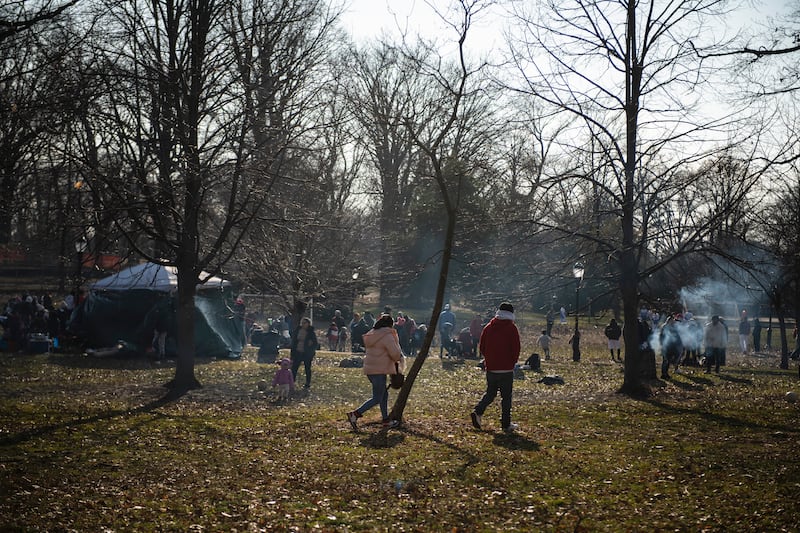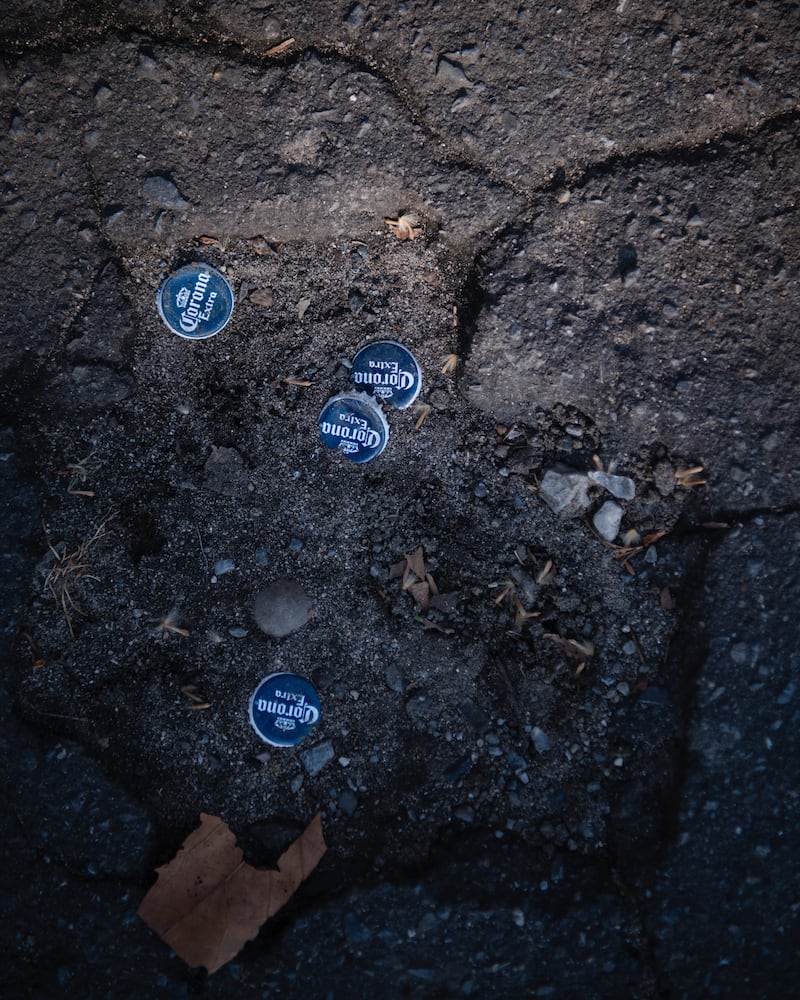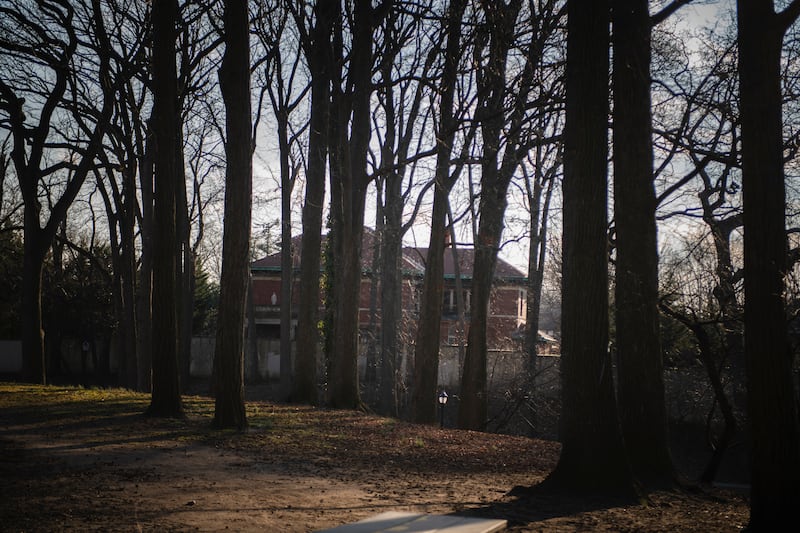The 10 Carmelite nuns of Cypress Hills, cloistered in Brooklyn for almost 20 years, decided to leave New York City after much contemplation.
As much as they tried, the sisters of the Monastery of Our Lady of Mount Carmel and St Joseph, devotees of silence and prayer who rarely left the confines of the cloister, could no longer ignore what was going on outside. The loud celebrations in an adjacent park became a bit too much. And when a beloved lay volunteer was murdered, the sisters were shaken deeply.
The last straw came in 2020, that first pandemic summer, with the explosion of late-night partying on their street involving cars with powerful speakers, says Mother Ana Maria, who speaks on behalf of the monastery, which used to be on Highland Boulevard.
“Our walls shook and our windows shattered,” she says. The sisters wondered whether the blaring music well past midnight was aimed directly at them.
READ MORE
Sometimes, police would break up the gatherings after neighbours called to complain, but the parties would often return immediately. “It was unbearable,” says Mother Ana Maria, who, along with her sisters, begins each day at 5am. The nuns pushed their beds away from the walls of their cells – the small rooms where they slept – but still felt unsafe, she says.
[ The nuns of Leap: ‘We refuse to go along with modernism’Opens in new window ]
So, in late January, the sisters decided to decamp for rural Pennsylvania. Now there are just four monasteries left in New York City, one each in the Bronx and Queens, and two in Brooklyn.
“As a New Yorker, I’m angry and embarrassed that the city couldn’t take care of this,” says Louis Pfaff, a lay volunteer who is helping the sisters build a monastery about 50km north of Scranton. “It’s a big loss, as I know they loved the city, their neighbours.”
Their singing made you feel like you were in heaven
This is not the first time the Carmelites have been displaced in Brooklyn. Their original monastery in Crown Heights, described by the New York Times as a “medieval fortress”, closed in 1996. As the Carmelite sisters fanned across the United States, the Brooklyn diocese later indicated that if any wanted to return, an empty Lithuanian Franciscan monastery in Cypress Hills was available.
In 2004, six sisters took up the diocese on its offer and relocated to New York. The monastery was “an ideal location, in a quiet corner of the city”, according to the Carmelite website.
[ The TikTok nuns: ‘If we’re hidden, we’re going to die out’Opens in new window ]
For a while, life in Cypress Hills was “peaceful and amazing”, Mother Ana Maria says. The sisters dedicated themselves to prayer, meditation, spiritual reading and baking altar bread.
Mass there was special, says Roberta Alicea, who attended services for nearly 12 years. The sisters, who remained unseen, would sing behind a metal grating in the choir room next to the chapel. “Their singing made you feel like you were in heaven,” Alicea says.

Most days, the nuns, who ranged in age from 19 to 80-something, did not speak to anyone outside the monastery, although a mobile phone and a computer were on the premises and used when necessary. To communicate with volunteers and priests, the sisters normally spoke through a turn, a barrel-shaped revolving cabinet used to pass goods into the monastery without violating the cloister.
“You’d often be talking to a sister about something through the turn and, all of a sudden, some coffee or oatmeal would appear,” says James Krug, director of the Oblates of St Teresa of Jesus and St John of the Cross, a lay volunteer group.
[ Keeping their distance: Enclosed nuns attract followers via online MassOpens in new window ]
About 10 years ago the noise from Highland Park, which was next to their home, started to bother the sisters. They also started to hear reports from their caretakers and volunteers about dead animals, empty liquor bottles and drug paraphernalia found behind their monastery, in a barbecue area, Krug says.
Still, they understood the value of the 55-hectare park in a city where green space is lacking. “The city’s parks system is incredible because it’s a sanctuary, as many people live in small spaces,” says Mother Ana Maria, who is originally from the Inwood neighbourhood of Manhattan.
Highland Park is certainly a gem, and we want everyone to be able to enjoy it, but not at the expense of those who live next to or close to the park
But in 2017, the sisters become more concerned for their safety when George Carroll, a beloved oblate volunteer, died in a stabbing in Greenpoint, several kilometres away.
Before his death, Carroll, who had bicycled to the monastery almost every day, represented the sisters to city officials, relaying their concerns about the noise in the park. He also shovelled snow, pruned the courtyard garden and made minor repairs in the cloister, says his wife, Christina Carroll, who held his funeral at the monastery.

“George’s death was a shock to everyone, and he is very missed,” Mother Ana Maria says.
During the summer of 2020 an explosion of late-night partying ensued in the neighbourhood which, say residents, still happens when it’s warm outside.
Lesleigh Irish-Underwood, who has lived on Highland Boulevard for more than 20 years, says loud socialising has always been an issue, because the park is a popular spot for barbecues and birthday parties.
“It’s lovely to see all the balloons, people having fun during the day, but it’s what happens late at night that we can’t take any more,” says Irish-Underwood, who has complained about drag races, garbage dumping, homeless encampments and blocked driveways on and near her street.
The move was a very bittersweet moment with our hearts filled with joy and sorrow
“Highland Park is certainly a gem, and we want everyone to be able to enjoy it, but not at the expense of those who live next to or close to the park,” says Sandy Nurse, a Demoratic city councillor whose district includes Cypress Hills. She recently met city officials and residents to co-ordinate a consistent, tighter response to neighbourhood crime and quality-of-life issues. “It shouldn’t have to come with all this baggage,” she says.
In 2021, the sisters were done. They shared their desire to move with diocese officials, priests and anyone who could help them find a new home.
Eventually, a priest put the sisters in touch with Joseph Grady, founder of My Jesus Mercy Ministries, who donated five hectares in Pleasant Mount, Pennsylvania. The sisters have raised about $2 million to build a new monastery there.

This past winter, they prepared to leave Brooklyn. They stopped baking altar bread and started to cull their belongings to the bare essentials.
On a sunny January afternoon during rush hour, a passenger van carried the sisters out of the city. The move was “a very bittersweet moment with our hearts filled with joy and sorrow”, Mother Ana Maria says. “I only have love for the city, our neighbours, our great volunteers, the New York police and parks departments, and everyone who tried to help,” she says. “We pray for them all.”
For now, they are living in a monastery and retreat centre in Clarks Summit, Pennsylvania, that is owned by the Diocese of Scranton. “It’s sad the sisters had to move, but Brooklyn’s loss is our gain,” says Joseph C Bambera, the Bishop of Scranton.
The sisters have ambitious plans for their permanent home, which will include a Spanish-style monastery, a barn and a caretaker’s house, estimated to cost about $25 million. They should be able to move into a modular cloister of about 3,500sq ft on the donated land by year’s end, Pfaff says.
Dan Kastanis, a New York parks-department spokesman, says the agency was saddened to hear that the sisters had relocated. The future of the monastery and the adjoining property is under review, says the Brooklyn diocese, which owns the property.
Mother Ana Maria doesn’t hesitate when asked how the nuns are faring in their temporary home, surrounded by greenery, wildlife and quiet. “We’re sleeping really well,” she says. – This article originally appeared in The New York Times













